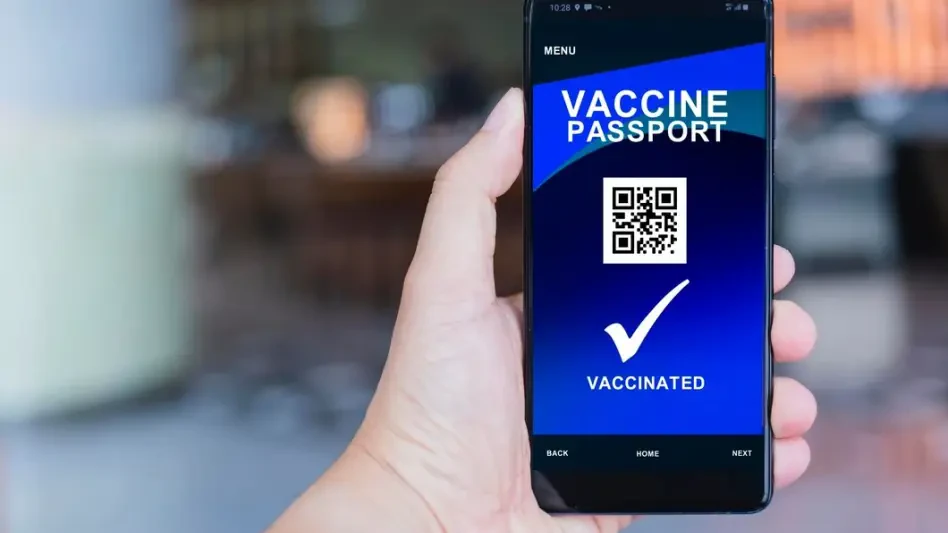Understanding Digital Health Passports: Origins and Current Landscape
Digital health passports burst onto the scene during the global health crisis of the early 2020s as a critical tool to verify vaccination status or test results, enabling safer travel and access to public spaces amid unprecedented restrictions. These digital credentials, typically accessible through mobile apps or QR codes, were initially deployed to restore confidence in high-contact environments such as airports, workplaces, and entertainment venues. Their primary goal was to balance public health safety with the urgent need to resume economic and social activities, providing a standardized way to prove health compliance without relying on cumbersome paper records.
Today, the landscape of digital health passports reflects a mix of sustained use and reevaluation. Key players like the European Union with its Digital COVID Certificate, the International Air Transport Association (IATA), and the World Health Organization (WHO) continue to shape their adoption, particularly in travel and health sectors. While the urgency of their initial rollout has diminished in many regions, certain systems remain active, especially for cross-border movement, with organizations like IATA piloting integrations into broader travel identity frameworks. The WHO, meanwhile, pushes for global standards to ensure consistency across diverse implementations.
Technologically, these passports rely on secure mobile applications and scannable codes, often linked to national health databases, forming a backbone for verification. Their integration into digital identity systems marks a significant shift, as they evolve from standalone emergency tools to components of larger ecosystems that could include personal health records or travel documentation. This adaptability highlights their potential staying power in industries like aviation and healthcare, where seamless, secure data sharing remains a priority.
Current Trends and Market Dynamics
Emerging Roles and Technological Shifts
The role of digital health passports has undergone a notable transformation, moving beyond their origins as crisis-driven gatekeeping mechanisms to becoming modular elements within comprehensive digital health and identity frameworks. No longer just a pass to board a plane or enter a venue, they are increasingly seen as tools for long-term health data management, with applications in maintaining standardized vaccination records for continuity of care across borders or systems. This shift reflects a broader vision of integrating health credentials into everyday digital interactions.
Technological advancements are driving this evolution, with innovations like digital wallets incorporating health data alongside payment and identity information. Concepts such as IATA’s journey-pass aim to streamline travel by bundling health credentials with other documents, reducing friction at checkpoints. Meanwhile, consumer expectations are pushing for greater privacy and control over personal data, prompting developers to prioritize user-friendly interfaces and transparent data policies. Interoperability remains a key focus, as stakeholders work to ensure systems can communicate across borders and platforms without creating silos.
These trends point to a future where digital health passports are less about mandatory compliance and more about optional, value-added services. For instance, travelers might choose to share health data for faster processing, while patients could use these tools to access care in foreign systems seamlessly. The emphasis on flexibility and user empowerment suggests that technology must keep pace with societal demands for trust and autonomy in data sharing.
Usage Data and Future Projections
During the peak years of global health restrictions, adoption of digital health passports soared, with millions of users worldwide relying on systems like the EU’s certificate to facilitate travel and public access. Current data indicates a decline in broad usage as emergency mandates have eased, though specific sectors like international aviation retain significant engagement, with over 60% of cross-border travelers in major hubs still using digital credentials for entry requirements. Outbreak response scenarios also see periodic spikes, particularly in regions managing localized health threats.
Looking ahead, projections suggest steady growth in niche applications rather than mass adoption. From this year to 2027, industry pilots in aviation are expected to expand, with IATA estimating a 30% increase in airlines adopting integrated health and identity solutions. In healthcare, the use of digital records for vaccination tracking is forecasted to grow in regions with fragmented medical systems, supporting patients who move frequently. Global health policies, including WHO’s push for standardized frameworks, are likely to bolster these targeted implementations.
Scalability remains a critical factor, with potential expansion driven by public health needs, such as emerging infectious diseases, and technological innovations like cloud-based verification systems. Stakeholder feedback indicates a cautious optimism, with many advocating for systems that can be activated swiftly during crises while remaining dormant—and non-intrusive—during stable periods. This balance between readiness and restraint will shape the trajectory of digital health passports in the coming years.
Challenges in Adoption and Effectiveness
The path to widespread adoption of digital health passports is fraught with obstacles, chief among them being fragmented implementation across countries and systems. Disparate standards and incompatible platforms often leave users navigating a maze of apps or fallback paper records, creating friction especially for international travelers. Despite efforts to harmonize approaches, the lack of universal interoperability continues to hinder efficiency and user experience, posing a significant barrier to global utility.
Privacy risks further complicate the landscape, as concerns over data misuse, unclear retention policies, and potential vendor lock-in erode public confidence. Sensitive health information, if not safeguarded rigorously, could be exploited or repurposed without consent, raising alarms among civil liberties groups. Equity issues also loom large, as the digital divide excludes marginalized populations—such as low-income individuals or migrants without smartphones—from accessing these tools, exacerbating existing disparities in health and mobility access.
Public trust remains a pivotal challenge, with polarized responses to past mandates revealing deep societal divides. Evidence on the impact of digital health passports on vaccination uptake is mixed, with some regions reporting modest increases while others saw backlash against perceived overreach. Strategies to address these barriers include shifting to voluntary systems, offering offline alternatives like printable codes, and enhancing transparency in data handling. Without such measures, skepticism and resistance could undermine even the most well-intentioned deployments.
Regulatory and Ethical Considerations
The regulatory environment surrounding digital health passports is complex, with global and regional bodies striving to establish cohesive guidelines. The WHO has taken a lead role in developing specifications like the Smart Vaccination Certificate, aiming to create a standardized approach that countries can adapt while maintaining security and interoperability. In parallel, regional frameworks, such as the EU’s data protection and health certificate policies, provide robust models for balancing utility with user rights, though they often face challenges in global alignment.
Ethical imperatives are central to these regulatory efforts, with principles like privacy by design, minimal data collection, and explicit consent forming the foundation for trustworthy systems. These standards aim to ensure that personal information is used only for intended purposes and that users retain control over their data. Failure to adhere to such principles risks not only legal repercussions but also a loss of public faith, which is critical for sustained adoption in sensitive areas like health and travel.
Recent shifts in policy reflect a move away from mandatory enforcement toward voluntary participation, accompanied by safeguards to prevent mission creep—where tools expand beyond their original scope without oversight. Regulatory changes are also influencing deployment timelines, with stricter data protection laws in some regions slowing rollout but ultimately fostering more resilient systems. As these frameworks evolve, they must address both technological realities and cultural attitudes to ensure compliance and acceptance across diverse populations.
The Future of Digital Health Passports
Envisioning the long-term role of digital health passports reveals promising possibilities in both travel and healthcare. In aviation, seamless integration with digital identities could redefine border processes, allowing health data to function as an optional layer within a unified travel profile, minimizing delays while maintaining security. In healthcare, these tools hold potential for supporting continuity of care, enabling patients to carry verified vaccination or treatment histories across systems, which is especially valuable for transient populations.
Emerging innovations, such as blockchain for secure and decentralized data sharing, offer exciting avenues to enhance trust and efficiency. However, market disruptors like shifting consumer attitudes toward surveillance and data sharing could temper enthusiasm, as users demand greater transparency and autonomy. Balancing these technological advancements with societal expectations will be crucial to avoid alienating key demographics who prioritize privacy over convenience.
Influencing factors, including global health trends and economic conditions, will also shape the trajectory of these tools. A renewed focus on equitable access, through low-tech alternatives like paper-based QR codes, is essential to prevent exclusion in resource-limited settings. While broad mandates seem unlikely in the near term, niche relevance in high-stakes areas like international travel and outbreak management suggests a focused, rather than universal, future for digital health passports.
Conclusion and Strategic Outlook
Reflecting on the journey of digital health passports, their evolution from emergency necessities to specialized tools underscores a remarkable adaptability amid shifting global needs. Their value in contexts like cross-border travel and clinical care continuity stands out as a testament to targeted utility, even as ethical and practical challenges temper broader ambitions. The exploration of their role reveals a technology capable of enduring, provided it navigates the complexities of trust and access with precision.
Looking ahead, stakeholders are encouraged to prioritize international standards for interoperability, ensuring systems can operate cohesively across borders and platforms. Empowering user choice through voluntary frameworks and robust privacy protections emerges as a non-negotiable step to rebuild confidence. Additionally, investing in inclusive solutions, such as offline options for those without digital access, promises to bridge equity gaps and expand reach. These actionable strategies offer a roadmap to transform digital health passports into sustainable assets for a connected, health-conscious world.









